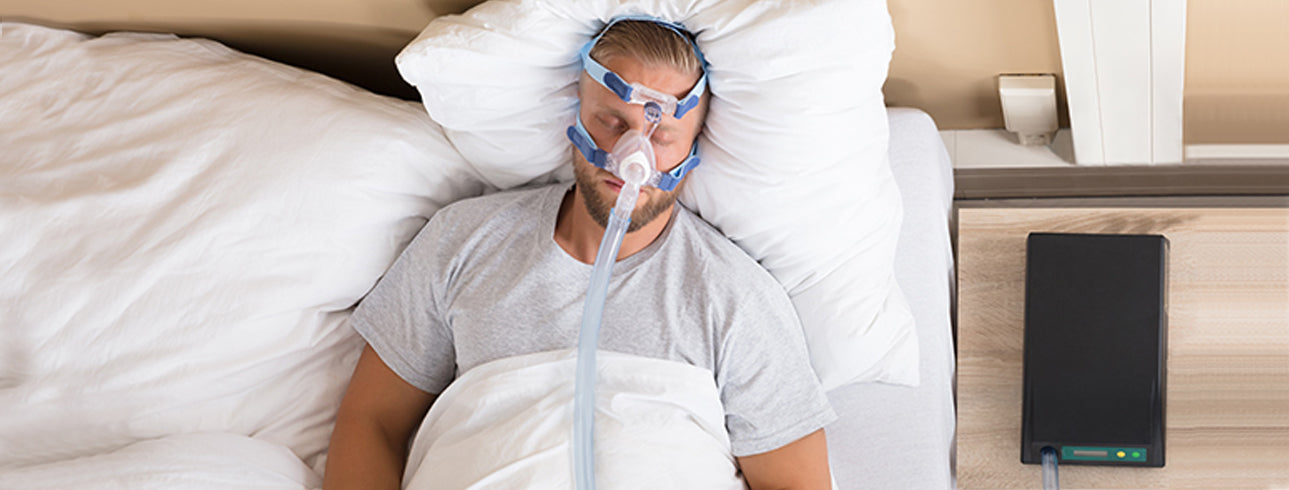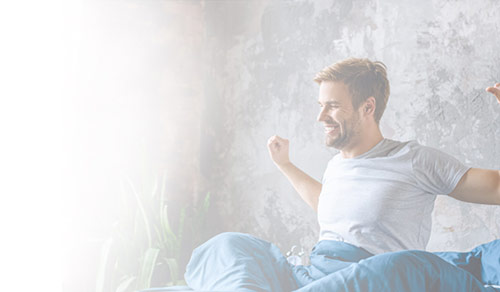
10 Tips to Sleep Easier With A CPAP Machine
Continuous Positive Air Pressure (CPAP) machines are commonly used to ease the symptoms of sleep apnea and help people with this condition rest better at night.
Although this treatment can make a significance different to overall sleep quality, getting used to a CPAP machine can take a while. Research data shows that approximately 35% of sleep apnea patients don’t complete their treatment using Continuous Positive Air Pressure machines.
To help make the process easier, we have selected the top 10 tips you can use to sleep better when using these devices.
- Use CPAP Every Time You Go To Sleep
Consistency is crucial when it comes to treating any health condition, including sleep apnea. There are several studies showing that hours of use are directly linked to better outcomes, and that optimal results are seen when the device is used every night (and even during naps).
- Never Give Up
When you start to use one of these devices, you may need to make some adjustments to your bedtime routine. If you find these changes difficult, remember that your health is at stake, do some “mask desensitization”, and never give up treatment.
Try putting the mask on while watching TV or reading. This will help you learn to breathe with it on — and not stress about having to actually fall asleep.
- Relax Before Going To Bed
To a great degree, sleep quality is affected by your frame of mind. Stress causes muscle tension and an increased heart rate, which in turn can worsen problems like insomnia or sleep apnea.
It can be helpful to create a relaxing night-time routine that breaks the stress-poor sleep cycle.
- Keep Your CPAP Clean
Clean the mask, headgear and tubes weekly with soap and warm water. This will remove built-up oils and prevent condensation, making the use of the device more comfortable.
Use mask wipes or a damp cloth to clean mask parts that touch the face more often. This helps get a good nightly seal.
- Make Your Mask As Comfortable As Possible
If you struggle falling asleep with a mask on, you may want to use the low pressure setting, which sometimes is labeled as “RAMP”. In some machines, this built-in feature is set to gradually increase pressure throughout the night in a way that doesn’t disturb your sleep.
There may be other comfort features in your CPAP machine, so make sure you ask the technician about the specific details for the model you’ll be using.
- Optimize Your Lifestyle
People with sleep disorders should avoid anything that could interfere with their sleep quality. This may include:
- Reducing alcohol consumption before bed.
- Lowering your caffeine intake.
- Quitting smoking.
- Switch to a healthier diet that includes foods rich in melatonin, the sleep hormone.
- If you’re overweight, losing weight could significantly reduce sleep apnea symptoms.
- Make Sure You Use the Right Mattress and Pillow
The position of your head and body are important elements of comfort when using a CPAP machine. Choosing the right mattress and pillow can help you stay in an optimal sleep position throughout the night, so you get the most out of treatment.
Ideally, you want a medium-firm mattress that supports your back and neck. Some people find memory foam pillows useful, so you could give them a try. There are also PAP Pillows on the market, designed to help side-sleepers.
- Make Sure there Is No Noise In The Room
There are many factors affecting sleep quality, ranging from lifestyle to environmental factors. A quiet bedroom environment makes it easier to get into a relaxed state before you put the CPAP mask on.
- Use A Humidifier If Needed
Some CPAP devices have built-in humidifier settings created to offer higher comfort. This can help with common complaints, like getting a dry mouth or an itchy nose.
When using humidifier settings, you should also ask the technician about ways of preventing condensation, which is usually achieved by using a special heated tube.
And if your device is set to work at high pressure, make sure to ask your technician about higher capacity water chambers. This will avoid running out of water in the middle of the night.
- Make Sure You Sleep In a Good Position
When using a CPAP machine, it’s best to avoid sleeping on your back, as this position makes it easier for the tongue to fall back and interrupt your breathing.
When using the device, you should try to sleep on your side, which would also give you the option of using a nasal face mask. Some people find it easier to adapt to nasal masks as opposed to full face masks.
CPAP therapy can help prevent the health complications of sleep apnea and contribute to a better nightly rest. Follow the suggestions in this article to make CPAP use easier and more comfortable.
Sources:
https://www.sleepadvisor.org/sleeping-with-cpap/
https://www.ncbi.nlm.nih.gov/pmc/articles/PMC1978355/
https://www.sleep.org/how-sleep-works/sleep-and-stress/
https://nutritionstudies.org/treating-sleep-apnea-with-diet-and-lifestyle/
